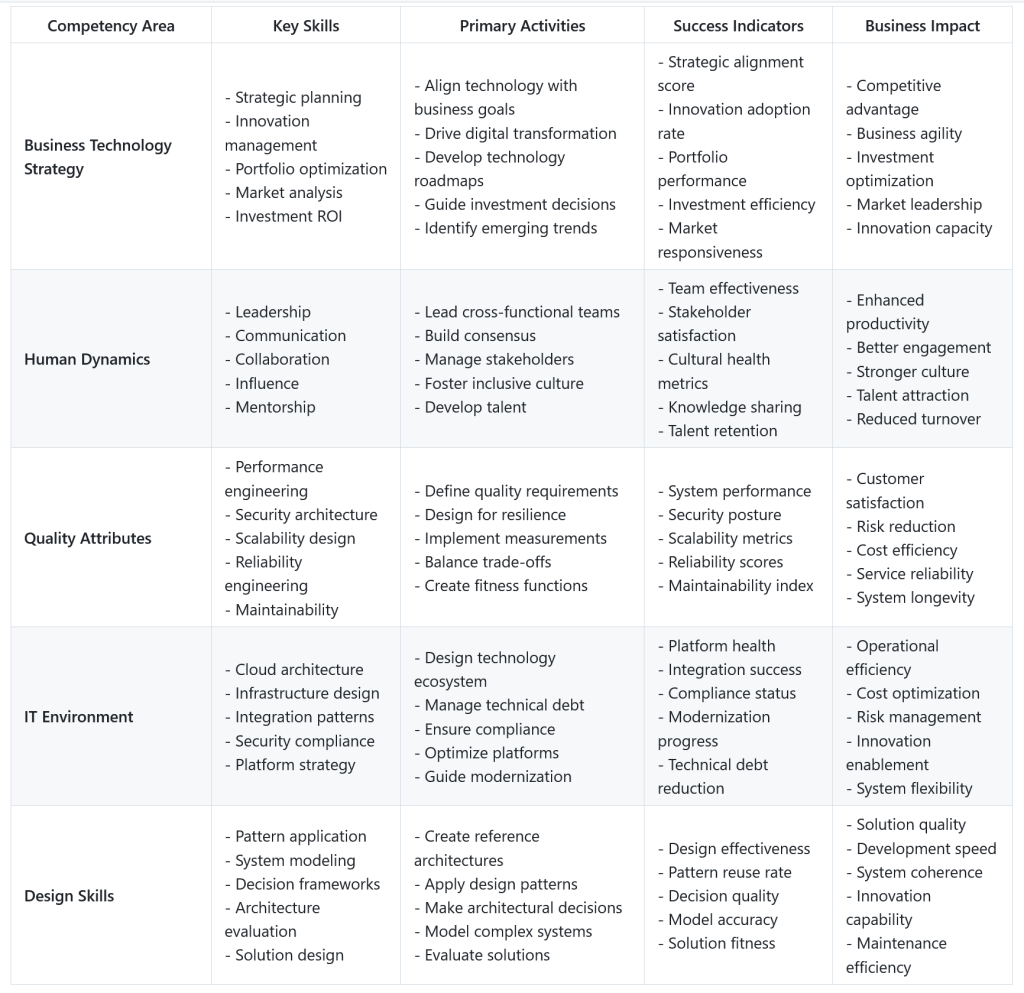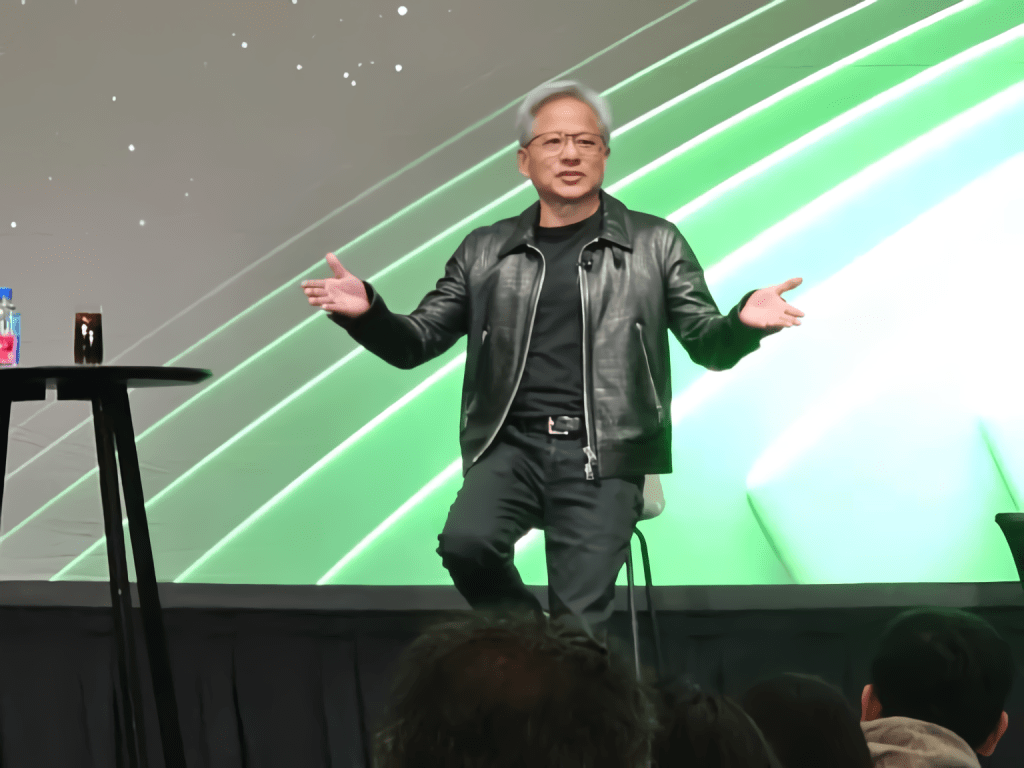From project to product: Architecting the future of enterprise technology
Shawn McCarthy Each competency area requires both depth and breadth, developing what IASA calls “T-shaped” skills — deep expertise in some areas combined with broad knowledge across many domains. This comprehensive model helps architects become true enablers of organizational success. Rethinking architecture as an ecosystem Instead of static blueprints that dictate every detail, modern architects steward an evolving ecosystem — one where teams can continuously refine services, products, and platforms. This approach enables: Faster time-to-value: Shortened cycles between idea and production De-risked change: Architecture decisions and technology stacks that can shift without major upheavals Empowered teams: Autonomy in design choices, backed by shared tools, data and standards that facilitate alignment Continuous evolution: Architecture that adapts to changing business needs and technological opportunities Key focus areas for modern architects Vision and strategy Develop and communicate clear architectural vision Align technical strategy with business objectives Create roadmaps for evolutionary change Balance innovation with stability Platform thinking Build reusable capabilities and services Create self-service platforms that enable team autonomy Establish clear platform governance models Monitor and optimize platform adoption Community building Foster a culture of knowledge sharing Build communities of practice Enable cross-team collaboration Promote architectural thinking at all levels Measurement and improvement Define clear success metrics Implement feedback loops Track architectural health indicators Drive continuous improvement Putting it all together In this urban planner model, the architect’s job is to: Envision a cohesive future state aligned to business outcomes Enable teams with platforms and best-practice patterns Inspire innovation by reducing friction and celebrating collaboration Hold the organization accountable for ensuring architectural decisions lead to real, measurable value The modern architect must balance multiple perspectives and priorities: Technical excellence vs. business pragmatism Innovation vs. stability Standardization vs. flexibility Global optimization vs. local autonomy By moving beyond rigid blueprints and embracing an urban planner ethos, the modern architect helps the enterprise navigate complexity, seize opportunities and build a thriving technology ecosystem — one that combines agility, innovation and clear alignment with strategic goals. VII. Practical implementation guide Start by establishing some guiding principles as a reference point but also helping teams through their transformation. Teams should know good enough is acceptable and continuous improvement is encouraged. Make the best recommendations/decisions based on the information at hand. Phase 1: Foundation building Just as cities begin with basic infrastructure, we start with: Architecture maturity assessment Just enough current state knowledge Business capability mapping Quick win identification Baseline metrics establishment Initial product domain definition Phase 2: Transformation launch Like developing new city districts, we focus on: Cross-functional team building Measurement framework implementation Cultural transformation initiation Pilot program launches Feedback mechanism establishment Phase 3: Scale and optimize Similar to expanding successful urban development patterns: Pattern replication Framework refinement Automation enhancement Business integration deepening Governance evolution Redefining product domains as you learn/mature VIII. Conclusion: Building tomorrow’s enterprise The transformation from project-centric to product-oriented architecture represents more than a change in delivery methodology — it’s a fundamental shift in how we create and sustain business value through technology. Just as thriving cities evolve from collections of buildings into vibrant, interconnected communities, our technology landscapes must transform from isolated projects into dynamic product platforms that enable continuous innovation. Vision of the transformed enterprise Platforms that accelerate rather than constrain innovation Self-service capabilities that democratize development Automated guardrails ensuring continuous alignment with quality attributes Transparent portfolio health metrics guiding decisions Engaged teams thriving in a culture of continuous learning Architecture designed for evolution, not perfection Strong technical foundations that enable rapid innovation In the process, architects step out from behind the mysterious curtain — like Oz — and into a role more akin to the curious and imaginative Alice. By fostering collaboration, curiosity and continuous improvement, you’ll build not just technology solutions, but a resilient digital ecosystem that can adapt to tomorrow’s challenges. Key takeaways for technology leaders Start with business outcomes, not just technical standards Align DORA metrics and ISO 25010 quality attributes for holistic insight Provide platforms and guardrails that make doing the right thing easy Measure what matters — tie metrics to strategic objectives Invest in talent and culture: a thriving city needs skilled, motivated citizens Design for evolution: domain-driven design and modularity enable faster adaptation Continuously share insights and scale successful patterns Remember, just as great cities aren’t built in a day, this transformation is a journey rather than a destination. The key is to start now, move purposefully, and keep the focus on enabling business outcomes rather than enforcing technical standards. In doing so, you’ll build not just a technology landscape, but a thriving ecosystem that powers your organization’s future success. Call to action: Starting your transformation Assess your current state against the framework provided Identify your most pressing improvement opportunities Build a coalition of business and technology leaders Choose a high-impact pilot area for initial focus Establish clear metrics for measuring progress Share successes and learnings broadly Scale proven patterns across the organization Maintain focus on continuous improvement Organizations that successfully navigate this transformation will build competitive advantages through faster response to market opportunities, more efficient use of technology investments, improved ability to attract and retain talent, enhanced capacity for innovation, and greater business-technology alignment. The time to start is now. Your technology ecosystem’s future success depends on the foundations you build today. Shawn McCarthy is vice president and chief architect, Global Architecture, Risk & Governance, at Manulife. Len van Greuning is chief information officer, Manulife Investment Management. This article was made possible by our partnership with the IASA Chief Architect Forum. The CAF’s purpose is to test, challenge and support the art and science of Business Technology Architecture and its evolution over time as well as grow the influence and leadership of chief architects both inside and outside the profession. The CAF is a leadership community of the IASA, the leading non-profit professional association for business technology architects. source
From project to product: Architecting the future of enterprise technology Read More »











